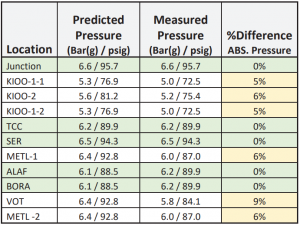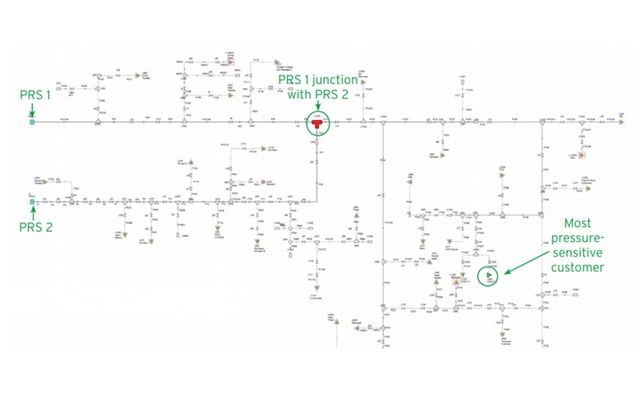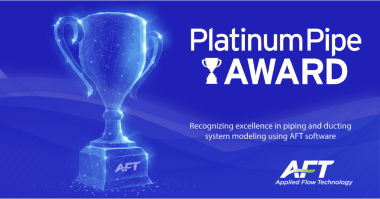When PanAfrican Energy Tanzania (PAET) had an acquisition on the horizon in Dar Es Salaam, Tanzania, they turned to AFT Arrow to help model and analyze a downstream piping network to assess gas deliverability for a network expansion. There was an opportunity to expand downstream and add a number of large new customers. Therefore, PAET needed to ensure the network could be expanded in a cost-effective manner and new gas volume commitments could be made with confidence.
As this network had not been expanded for a number of years, PAET worked with a consultant to develop and validate a model in AFT Arrow 6 of the distribution network which delivers natural gas to industries primarily for power generation and process heating.
According to PAET engineers, a number of pipeline modeling tools were available, but because of its relative simplicity with respect to phase equilibria and gas phase, AFT Arrow was a cost-effective tool to model the pipeline system. With AFT Arrow they could accurately simulate the network while improving the systems engineering; improvements which result in less costly, more efficient, and more reliable piping systems. Additionally, PAET’s engineers could continuously use the AFT Arrow model to evaluate the pipeline’s ability to supply new customers as the system continued to expand with future growth beyond this initial acquisition.
The primary distribution system takes off from the Songas transmission line with a steel line to two Main Supply Stations (also called Pressure Reduction Stations or PRS). From there the system is approximately 45 km (28 miles) of high pressure 16” Polyethylene (PE) pipeline. All gas demand is met via the two Pressure Reduction Stations (PRS) sites (Figure 1). While this single-phase pipeline has no compositional variability, it does run an interesting path that includes railways and harbors. A number of rivers and swamps are crossed by this system.
The AFT Arrow model was built with an orthographic grid and primarily used piping, junctions, tees, reducers, tanks, and valves. Downstream customers were modeled using the Assigned Flow junction. Because the piping system operated over a fairly narrow pressure and temperature range, the system was modeled as adiabatic (e.g. no heat transfer through pipes).
The hydraulic piping model consisted of three simulations including the base downstream network, the base simulation plus additional customers, and finally the previous two scenarios plus 0.641 MMscfd of new gas.
PRS sites were modeled as tanks with fixed pressure and temperatures. In most cases, pressure drop through the pipeline was dominated by distances rather that flow losses through tight bends, sudden reduction in flow area, etc… All valves and assigned flow junctions in AFT Arrow allowed a closed / no flow condition to be modeled.
The model results were validated based on field measured pressures. Critical values included PRS send-out pressure, the junction between the lines from PRS-1 and PRS-2, and end-of-pipeline and critical consumer pressures. End of the pipeline was significant because it determined the hydraulic losses through the entire system. This was especially important given the significant increase in gas flow to support one potential customer with up to 15 MW of additional / new power generation.

Figure 2: AFT Arrow model results of the predicted vs. measured pressures. The yellow shaded results were measured at the inter-regulator position and consistently resulted in 6-10% lower than predicted measured pressure.
Ultimately, the modeling results agreed extremely well with measured pressures. Measured results were within the predicted value. The percent difference consistently reflected 6 – 10% lower than predicted measured pressure (Figure 2). This is attributed to some pressure drop through the back-up regulator rather than an accurate measurement of the pipeline pressure. This loss value matches the pressure drop through the nearby PRS exceptionally well.
Given the confirmation of pressure drop to the intermediate gauge, and excellent agreement of all network pressures where upstream pressure could be measured, the model generated excellent results.
Most importantly, PanAfrican Energy was able to confirm there was significant capacity in the downstream network to meet additional gas commitments.





Comments